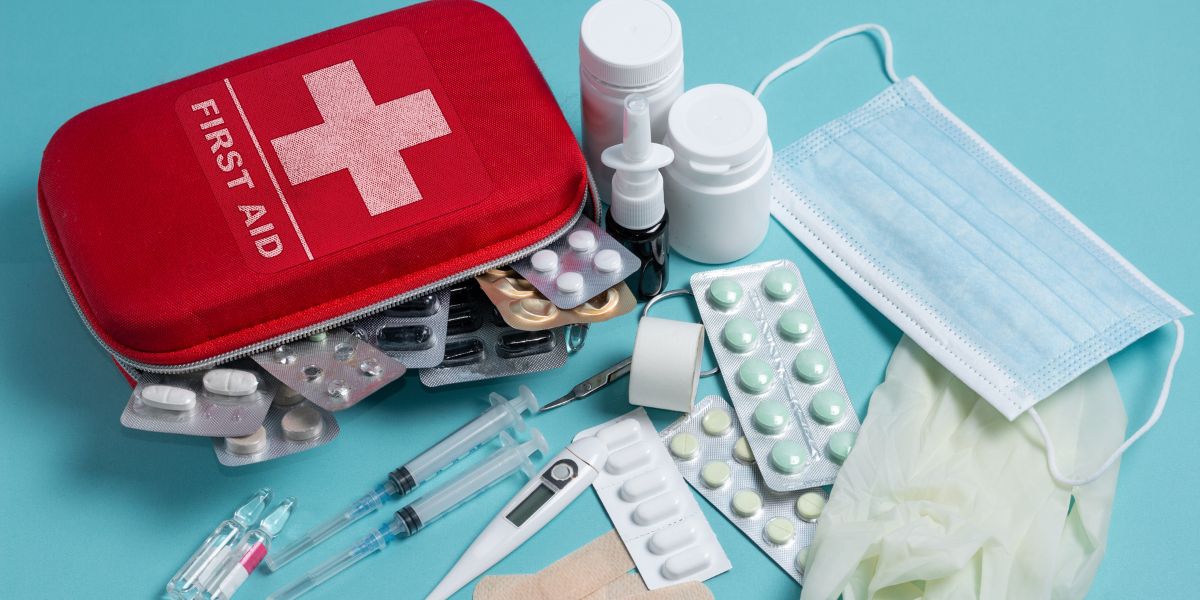
When you're planning a camping trip, packing a comprehensive first aid kit is crucial for your safety and peace of mind. You'll want to ensure it includes all the essentials for treating common injuries and ailments. But simply gathering supplies isn't enough; you need to tailor your kit to the specific activities you have in mind. Let's explore what items should be in your kit and how to keep it organized and effective.
Essential Items for Your Camping First Aid Kit
When you're heading out into the great outdoors, having a well-stocked first aid kit is crucial.
You'll want to include adhesive bandages in various sizes for cuts and scrapes. Don't forget antiseptic wipes to clean wounds and prevent infection. A roll of gauze and medical tape will help you manage larger injuries effectively.
Make sure to pack tweezers for splinter removal, as well as scissors for cutting tape or gauze. Pain relief medication like ibuprofen or acetaminophen can be handy for headaches or minor aches.
Include a thermometer to monitor for fever, and if you have allergies, pack antihistamines.
Lastly, a first aid manual can guide you in emergencies, ensuring you're prepared for any situation while camping.
Tailoring Your Kit to Specific Activities
No matter what outdoor activity you choose, tailoring your first aid kit to specific needs can make all the difference.
If you're hiking, include blister treatments and extra gauze for scrapes. Planning to fish? Don't forget tweezers for removing hooks. For biking, add a splint for potential falls.
If you're camping near water, consider waterproof bandages and anti-venom kits for snake bites.
For winter activities, pack heat packs and cold-weather-specific medications. If you'll be in remote areas, include a snake bite kit and emergency blanket.
Always think about the environment you'll be in and the risks involved. Adjusting your kit based on your planned activities ensures you're well-prepared for any situation that might arise.
Tips for Maintenance and Organization
To keep your first aid kit ready for action, regularly check its contents and replace any expired items.
Make it a habit to inspect your kit before each trip, ensuring everything is in good condition.
Organize supplies in clear, labeled pouches or containers, so you can quickly find what you need in an emergency.
Consider creating a checklist of items, marking off each as you pack them.
Store your kit in a waterproof bag to protect it from moisture and dirt.
Keep it in a designated spot in your camping gear, so you always know where it is.
Finally, involve your camping companions in familiarizing themselves with the kit, ensuring everyone knows how to access and use it if needed.
Emergency Procedures and Resources
While enjoying the great outdoors, knowing emergency procedures and resources can be crucial for your safety and that of your companions.
First, familiarize yourself with basic first aid techniques, like CPR and wound care, so you're ready for unexpected situations. Always have a reliable means of communication, such as a fully charged mobile phone or a satellite phone, to reach emergency services if needed.
Research the area's local hospitals and ranger stations beforehand, and keep their contact numbers handy. Create a plan that includes designated meeting points in case you get separated.
Lastly, consider carrying a portable GPS device to navigate unfamiliar terrain. Being prepared with these procedures and resources can make a significant difference in a crisis.
Conclusion
In conclusion, preparing a well-stocked camping first aid kit is vital for your safety and peace of mind during outdoor adventures. By including essential items and tailoring your kit to specific activities, you're ready for any situation. Don't forget to regularly check and organize your supplies to ensure everything's in good condition. With your first aid kit in hand, you can confidently enjoy your camping experience, knowing you're prepared for whatever comes your way.
Trending Products














